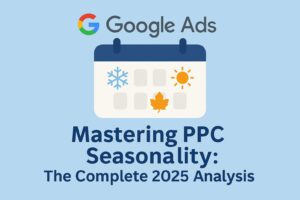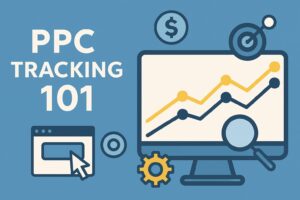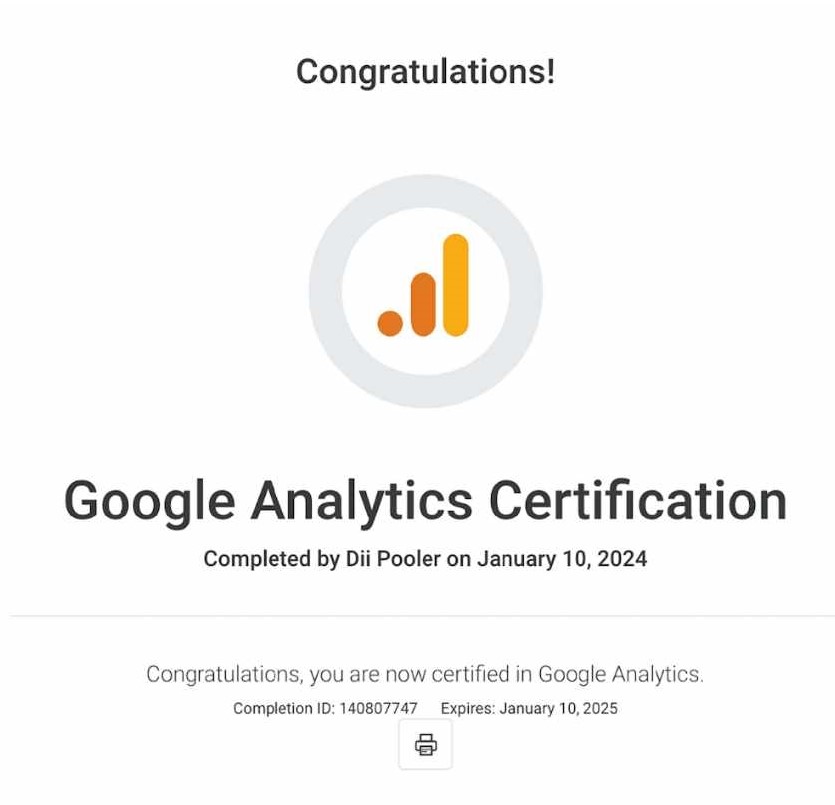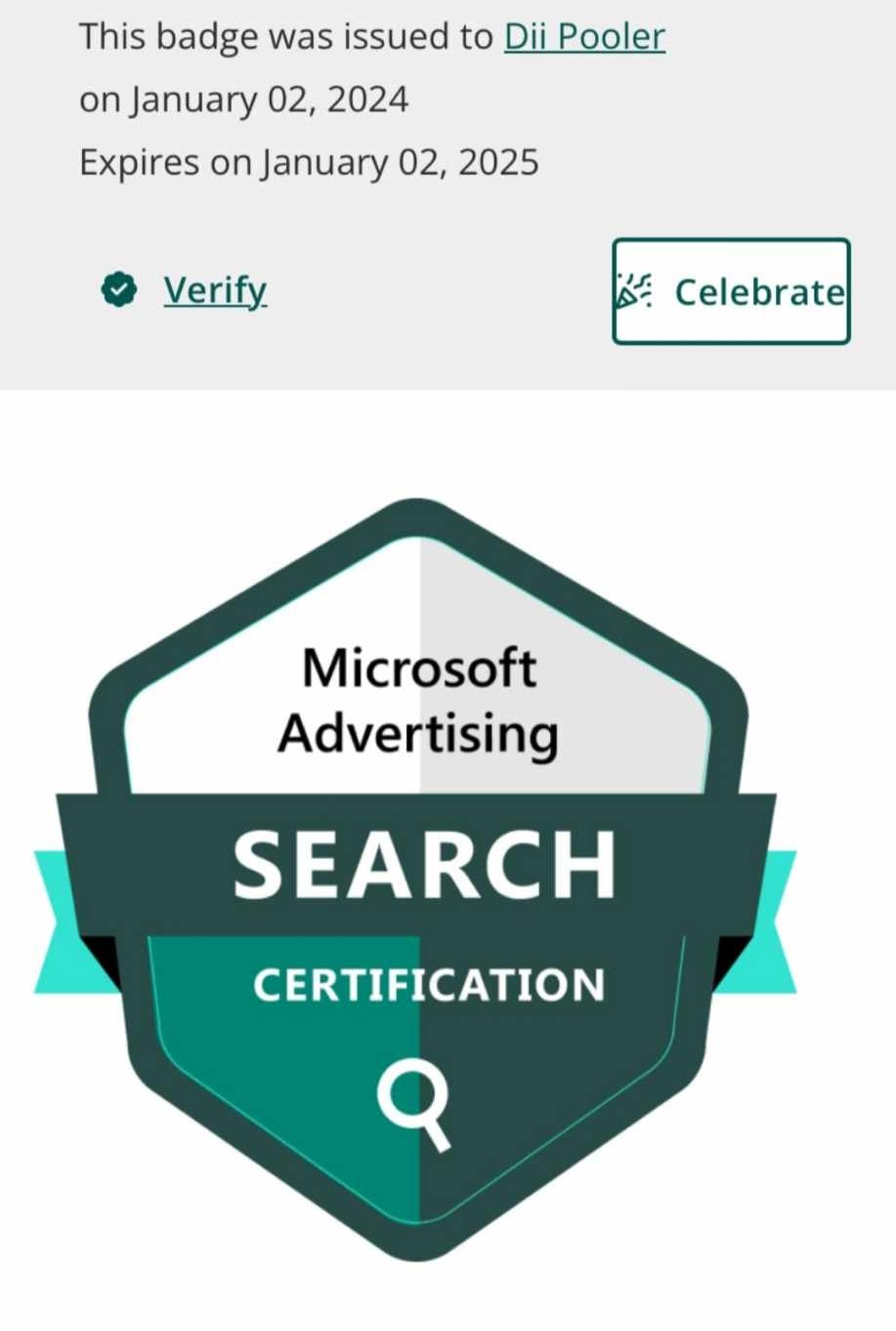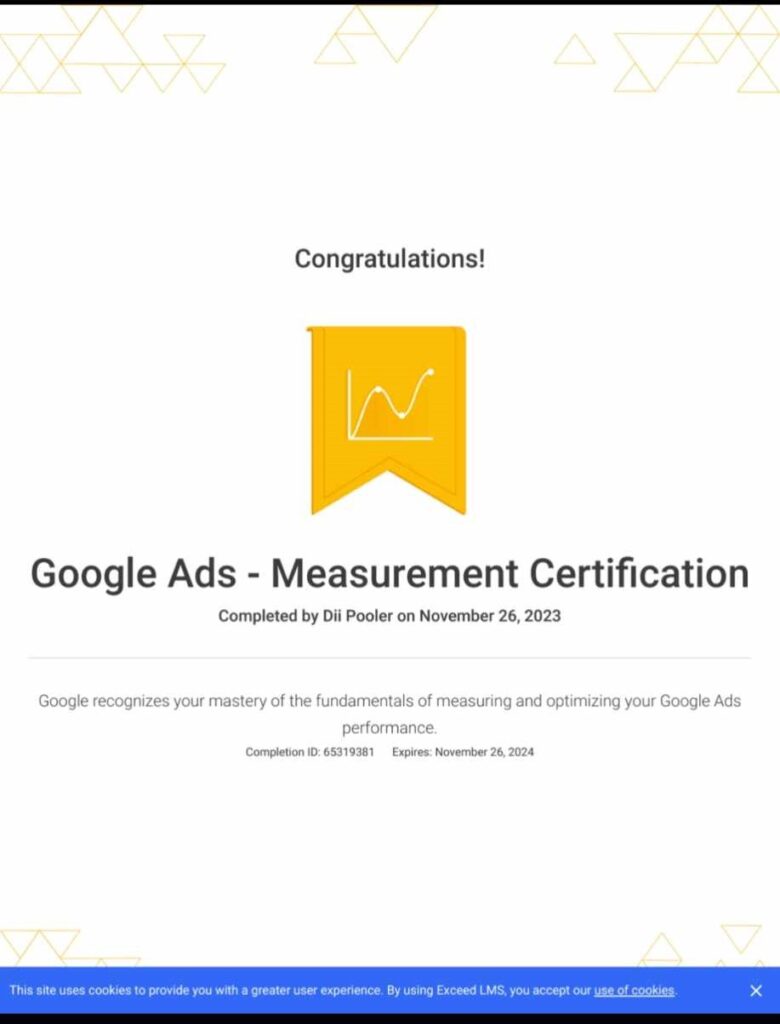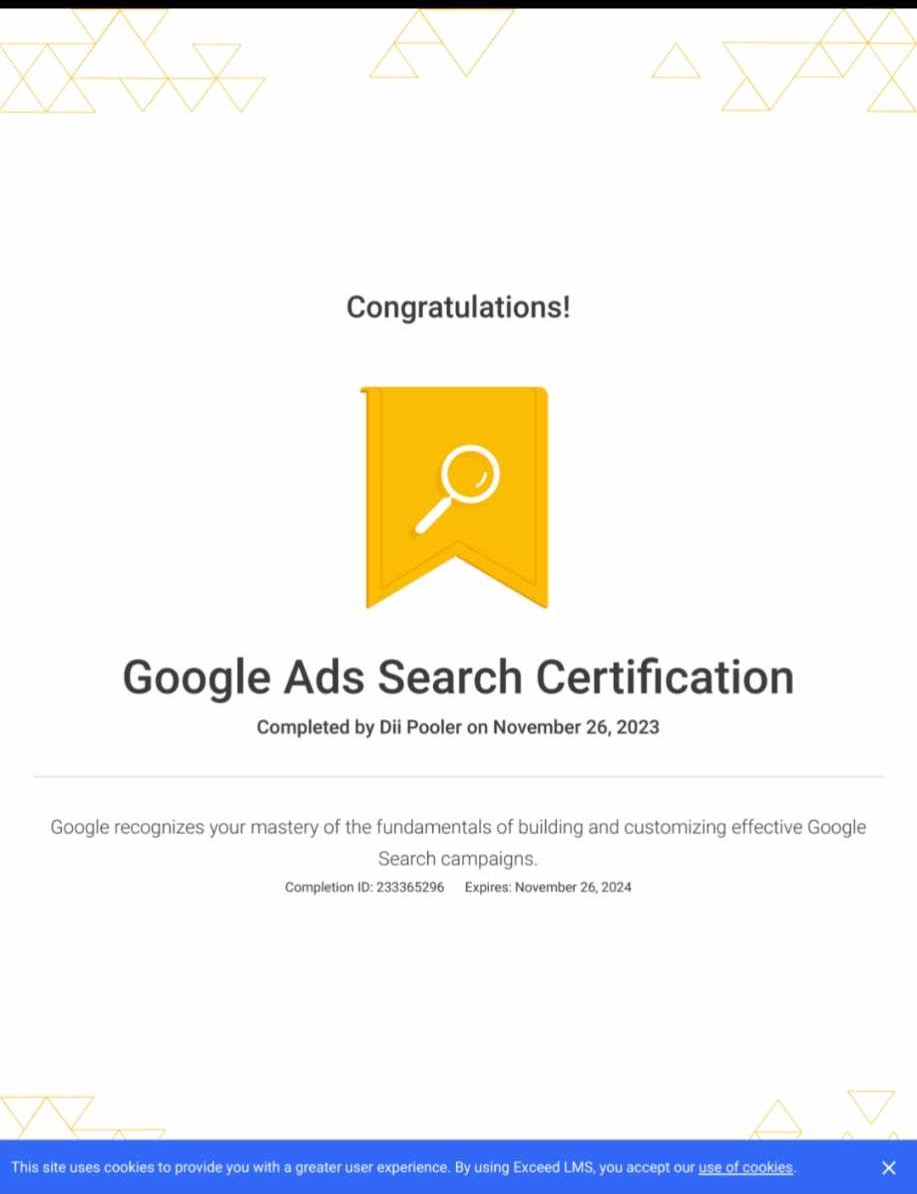Mastering PPC Seasonality
Seasonal trends can make or break your PPC campaigns. In 2025, the stakes are higher than ever as WordStream’s latest benchmarks reveal that cost per lead increased for 13 out of 23 industries, while conversion rates saw mixed results across sectors. Understanding and optimizing for seasonality isn’t just about holiday campaigns—it’s about building a strategic framework that maximizes performance during peak periods while maintaining efficiency during slower times.
The digital advertising landscape has evolved dramatically, with consumers starting holiday shopping earlier and extending purchases well into January. Microsoft Advertising’s 2024 holiday analysis shows a remarkable 25% increase in conversions after Christmas compared to 2023, fundamentally changing how we think about seasonal campaigns. This comprehensive guide explores how to leverage these trends for maximum PPC success throughout the year.
Modern Seasonality: Beyond Traditional Holiday Peaks
The Evolution of Seasonal Shopping Patterns
Traditional seasonal patterns have been completely disrupted. Queue-it’s extensive Black Friday analysis reveals that traffic from November 18th to 22nd (the days before Thanksgiving) totaled 321 million sessions—10% higher than Cyber Five itself. This represents a fundamental shift in consumer behavior that PPC professionals must understand and adapt to.
Mark Ballard and Andy Taylor from Tinuiti observed that sales growth jumped from 11% year-over-year in October to 20% year-over-year over the seven days before Thanksgiving. This acceleration demonstrates how the traditional “holiday season” now extends far beyond Black Friday and Cyber Monday.
The New Seasonal Reality: Extended Shopping Windows
The data shows several key trends reshaping PPC seasonality:
Early Shopping Surge: According to Zeta Global’s holiday research, 45% of consumers planned to spend more than $1,000 on holiday shopping in 2024, representing a dramatic increase from previous years where the majority planned to spend less than $100.
Extended Post-Holiday Opportunities: Microsoft Advertising reports that conversions in January increased by 25% compared to the previous year, making post-holiday periods crucial revenue opportunities rather than dead zones.
Mobile-First Shopping: Digital Commerce 360’s analysis shows that more than 50% of Holiday Season sales came from mobile devices, with mobile shopping highest on Christmas Day at 63% of online sales.
Identifying Your Unique Seasonal Patterns
Leveraging Data for Pattern Recognition
Before implementing seasonal strategies, you need to understand your specific business patterns. Michelle Morgan from WordStream emphasizes that history might repeat itself, or it might rhyme, but either way, regular trends are something you should be aware of and ready for.
Essential Data Sources for Seasonal Analysis:
Google Ads Historical Performance: Analyze 12-24 months of campaign data to identify recurring patterns in cost-per-click, conversion rates, and impression share fluctuations.
Google Analytics 4 Integration: Michelle Morgan recommends reviewing overall site trends for your company, not just your campaigns to get a comprehensive view of seasonal impact.
Google Trends Analysis: Coalition Technologies’ research shows how Google Trends helps identify when people typically start searching for your products or services each year.
Auction Insights Deep Dive: Coalition’s analysts note that if you’re in a highly competitive industry, like travel, your data might show a lot of competition during the summer months when demand is high.
Industry-Specific Seasonal Considerations
Octoboard’s PPC analytics platform analysis reveals that seasonal trends can significantly impact average cost-per-click (CPC) in Google Ads across different industries:
Retail and E-commerce: Peak periods during Thanksgiving, Christmas, and New Year often see a surge in online shopping and advertising, intensifying competition and causing CPCs to rise.
Education Sector: The back-to-school season leads to higher CPCs for businesses selling related products like stationery, computers, and children’s clothing.
Travel Industry: Summer months typically show increased competition and higher costs, while winter periods (excluding holidays) often present opportunities for more efficient spending.
Advanced Seasonality Optimization Strategies
Google Ads Seasonality Adjustments: The Power Tool
One of the most underutilized features in Google Ads is seasonality adjustments. According to PPC Ad Editor’s comprehensive guide, seasonality adjustments are perfect for short-term events—typically 1 to 7 days—where you expect noticeable changes in conversion rates.
Adventure PPC’s technical breakdown explains that seasonality bid adjustments enable advertisers to temporarily adjust their conversion rate expectations within Smart Bidding strategies like Target CPA or Target ROAS.
When to Use Seasonality Adjustments:
Flash Sales and Promotions: For a three-day flash sale with an expected 50% spike in conversion rates, seasonality adjustments ensure Google Ads accounts for this temporary boost.
Business Closures: When your business is closed for holidays and unavailable to handle inquiries, you can set an expected decrease in conversion rate to automatically reduce spending.
Major Shopping Events: During Black Friday, when Google may underestimate sharp increases in conversion rates, modest positive adjustments help Smart Bidding scale effectively.
Strategic Campaign Structure for Seasonal Success
Neil Patel’s seasonal campaign analysis emphasizes that overall campaign management is really important for ensuring a high-quality score for your AdWords account. His recommendation: ensure that your seasonal ads are tightly contained within their own unique ad groups.
Best Practices for Seasonal Campaign Organization:
Dedicated Seasonal Campaigns: Create separate campaigns for seasonal promotions to maintain better budget control and performance tracking.
Time-Based Ad Scheduling: Patel recommends using AdWords automation to start/pause campaigns on specific days and during pre-defined hours.
Negative Keywords Strategy: JumpFly’s seasonal guide suggests that promotional schedules should reflect consumer behavior, including strategic negative keyword implementation.
Budget Management During Seasonal Peaks
GrowthIQ Digital’s seasonality guide provides crucial insight: the digital advertising landscape is competitive and constantly evolving, but tools like seasonality adjustments give you an edge.
Strategic Budget Optimization:
Ramp-Up Timeline Planning: Start budget increases 2-3 weeks before expected seasonal peaks to allow campaigns to optimize and gather sufficient data.
Peak Period Management: During high-traffic periods, WordStream’s Michelle Morgan advises that platforms like Google Ads have tools that can alert you when performance changes by large swings.
Scale-Down Strategy: Avoid completely pausing campaigns during slower periods. Instead, reduce budgets and tighten targeting while maintaining campaign history and Quality Score.
The 2025 Holiday Season Breakdown: Data-Driven Insights
Black Friday and Cyber Monday Evolution
The 2024 holiday season provided crucial insights for 2025 planning. Tinuiti’s comprehensive analysis by Mark Ballard and Andy Taylor reveals several game-changing trends:
Extended Shopping Windows: With Thanksgiving coming a full five days later in 2024 than in 2023, consumers were less inclined to wait around until Black Friday to begin making a large share of their holiday purchases.
Mobile Shopping Dominance: Digital Commerce 360’s data shows that 51.1% of online sales came through smartphones, up from 47% in 2022.
Category Performance Shifts: According to their analysis, toys were a clear winner, with online sales growing 680% compared to an average day in October 2024.
Q4 Competitive Landscape Changes
Strike Social’s Q4 analysis reveals that competition for ad space for Q4 2024 holiday campaigns is not limited to retail brands. Both B2B and B2C advertisers are aggressively competing for inventory, particularly on Meta platforms.
Key 2025 Implications:
Early Campaign Launch Strategy: With fewer shopping days between Black Friday and Christmas in 2024, early campaign launches proved essential for better positioning.
Multi-Format Approach: Microsoft Advertising data shows that combining Search and Audience ads significantly boosts active user reach, driving a 42% lift in clickers and a 64% lift in converters.
Industry-Specific Seasonal Strategies
E-commerce and Retail Optimization
Launchmetrics’ Holiday Marketing 2024 report provides crucial insights: global Black Friday sales soared to an impressive $70.9 billion in 2023, making it a pivotal moment for brands and retailers.
E-commerce Seasonal Strategy Framework:
Pre-Season Preparation: Begin promotional planning in early October, with budget increases starting mid-October for optimal campaign learning.
Peak Performance Management: Tidio’s Black Friday research shows that 64% of consumers globally plan to shop online on Black Friday, requiring robust infrastructure planning.
Post-Holiday Optimization: Leverage the 25% increase in post-Christmas conversions identified by Microsoft Advertising to extend campaign value into January.
Service-Based Business Seasonality
Service businesses face different seasonal challenges and opportunities. Coalition Technologies notes that tax services are slammed from January to April, representing predictable seasonal patterns that require strategic planning.
Service Industry Best Practices:
Advance Planning: Begin seasonal preparations 6-8 weeks before peak periods to allow for campaign optimization and budget allocation.
Geographic Considerations: Seasonal patterns may vary significantly by geographic region, requiring location-specific optimization strategies.
Capacity Management: Align PPC spending with actual service capacity to avoid lead waste during peak periods.
Advanced Technical Implementation Smart Bidding Integration with Seasonal Patterns
Adventure PPC’s detailed analysis explains that while Smart Bidding is designed to handle many seasonal trends on its own, there are specific scenarios where seasonality bid adjustments can give your campaigns an edge.
Smart Bidding Optimization for Seasonality:
Target CPA Adjustments: During promotional periods, temporarily adjust Target CPA expectations to account for improved conversion rates.
Target ROAS Modifications: For seasonal product launches or sales, modify ROAS targets to reflect changed profit margins and customer acquisition priorities.
Enhanced CPC Integration: Use Enhanced CPC during transitional periods when historical data may not accurately reflect current seasonal trends.
Automation and Scheduling Strategies
PPC Ad Editor’s automation guide emphasizes that the key is using data to guide decisions, keeping adjustments targeted, and reviewing what worked after the event.
Automated Seasonal Management:
Rule-Based Optimization: Set up automated rules for budget increases/decreases based on performance thresholds during seasonal periods.
Schedule-Based Adjustments: Implement time-of-day and day-of-week bid adjustments that align with seasonal shopping patterns.
Performance Monitoring: Create automated alerts for significant performance changes during seasonal transitions.
Creative and Ad Copy Seasonalization
Seasonal Ad Copy Strategy
JumpFly’s optimization guide recommends that seasonal promos should be baked into your PPC plan. If you’re running a sale or discount, reflect it in your ad copy and assets.
Creative Optimization Best Practices:
Dynamic Content Integration: Use ad customizers and countdown timers to add urgency during time-sensitive seasonal sales.
Seasonal Asset Preparation: Develop seasonal ad assets well in advance, with multiple creative variations for A/B testing during peak periods.
Landing Page Alignment: Ensure seasonal ad copy promises are reflected on corresponding landing pages to maintain message consistency and conversion rates.
Visual and Video Content Seasonalization
Tinuiti’s Cyber Five analysis reveals that Reels video ads share of Facebook impressions during the Cyber Five more than doubled from 2023 to 2024.
Video Content Strategy:
Seasonal Video Assets: Develop platform-specific video content that reflects seasonal themes and promotional messaging.
Mobile-First Creation: With over 50% of sales occurring on mobile devices, prioritize mobile-optimized video content creation.
Multi-Platform Adaptation: Create video assets that work effectively across Google, Meta, and Microsoft Advertising platforms.
Performance Monitoring and Optimization
Real-Time Seasonal Performance Tracking
WordStream’s Michelle Morgan advises that during peak hours, things move fast. Just like other times of the year, it’s important to keep a close eye on how your campaigns are performing.
Essential Monitoring Practices:
Intraday Performance Analysis: Monitor performance multiple times daily during peak seasonal periods to identify optimization opportunities.
Competitive Intelligence: Use Auction Insights reports to understand competitive landscape changes during seasonal peaks.
Cross-Platform Coordination: Ensure consistent messaging and strategy across Google Ads, Microsoft Advertising, and social platforms.
Post-Seasonal Analysis and Learning
GrowthIQ Digital’s guide emphasizes that every adjustment period offers valuable insights. Use these learnings to refine your forecasts and strategies, improving performance with every seasonal event.
Comprehensive Post-Season Review:
Performance Attribution Analysis: Analyze which seasonal adjustments and strategies provided the highest ROI for future planning.
Customer Journey Mapping: Understand how seasonal campaigns influenced customer behavior throughout the entire purchase funnel.
Competitive Landscape Assessment: Evaluate how competitive dynamics shifted during seasonal periods and plan accordingly for future seasons.
Looking Ahead: Seasonal PPC Trends for 2025
Emerging Seasonal Patterns
Based on 2024 data and emerging trends, several key patterns are shaping seasonal PPC strategies for 2025:
Extended Shopping Seasons: The traditional concentrated holiday shopping period continues to spread across longer timeframes, requiring sustained campaign management rather than sprint-style optimization.
AI-Driven Personalization: Digital Commerce 360’s analysis shows that AI played a big role in accumulating $51 billion (17%) of global online sales during Cyber Week.
Cross-Platform Integration: Microsoft Advertising’s multi-format data demonstrates the power of integrated campaigns across multiple advertising platforms.
Technological Advancement Integration
Smart Bidding Evolution: Continued improvement in Google’s automated bidding systems will require more sophisticated seasonality adjustment strategies.
Enhanced Attribution: Better cross-device and cross-platform attribution will enable more accurate seasonal ROI measurement and optimization.
Predictive Analytics: Advanced forecasting tools will help predict seasonal trends more accurately, enabling proactive rather than reactive seasonal strategies.
Actionable Seasonal PPC Framework for 2025
Pre-Season Planning (8-12 Weeks Before)
Historical Data Analysis: Conduct comprehensive analysis of previous seasonal performance across all campaigns and platforms.
Competitive Research: Analyze competitor seasonal strategies and identify opportunities for differentiation.
Budget Planning: Develop detailed budget allocation strategies that account for increased competition and CPC inflation during peak periods.
Creative Development: Begin developing seasonal creative assets, including video content, display ads, and landing page modifications.
Implementation Phase (4-6 Weeks Before)
Campaign Structure Setup: Create dedicated seasonal campaigns and ad groups with appropriate budget allocation and targeting settings.
Seasonality Adjustments: Implement Google Ads seasonality adjustments for predictable conversion rate changes.
Automation Rules: Set up automated rules for budget management, bid adjustments, and performance alerts during seasonal periods.
Landing Page Optimization: Ensure all seasonal landing pages are optimized for mobile experience and fast loading times.
Peak Period Management (During Seasonal Events)
Real-Time Monitoring: Implement hourly performance reviews during peak shopping days with predetermined optimization triggers.
Budget Reallocation: Be prepared to shift budgets between campaigns and platforms based on real-time performance data.
Creative Testing: Continue A/B testing creative assets during peak periods to optimize performance throughout the season.
Competitive Response: Monitor competitive landscape changes and adjust strategies accordingly.
Post-Season Optimization (2-4 Weeks After)
Performance Analysis: Conduct comprehensive analysis of seasonal campaign performance across all KPIs and customer segments.
Learning Documentation: Document key insights and successful strategies for future seasonal planning.
Extended Opportunity Capture: Implement post-seasonal campaigns to capture extended shopping behavior and gift card redemptions.
Budget Transition: Gradually reduce seasonal budgets while maintaining campaign momentum for ongoing performance.
Conclusion: Mastering Seasonality
Seasonal PPC optimization in 2025 requires a sophisticated understanding of evolving consumer behavior, advanced platform capabilities, and strategic implementation of data-driven insights. The evidence is clear: businesses that proactively plan and optimize for seasonal trends significantly outperform those using reactive strategies.
Key success factors include early planning and preparation, data-driven decision making based on historical performance and emerging trends, integrated multi-platform strategies that leverage the strengths of each advertising channel, continuous optimization throughout seasonal periods rather than “set and forget” approaches, and comprehensive post-season analysis for continuous improvement.
As GrowthIQ Digital concludes: By mastering seasonality adjustments, you’re not just reacting to trends; you’re staying ahead of them, ensuring your campaigns consistently deliver impactful results.
The seasonal PPC landscape will continue evolving rapidly, driven by technological advancement, changing consumer behavior, and platform innovation. Businesses that embrace this complexity and develop sophisticated seasonal strategies will find significant competitive advantages in 2025 and beyond.
Remember that seasonal optimization is not just about holiday campaigns—it’s about building a comprehensive understanding of how your customers behave throughout the year and aligning your PPC strategies to capitalize on these patterns while maintaining efficiency during slower periods. The businesses that master this balance will be the ones that thrive in the competitive PPC landscape of 2025.

